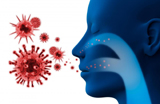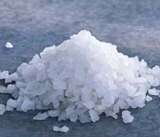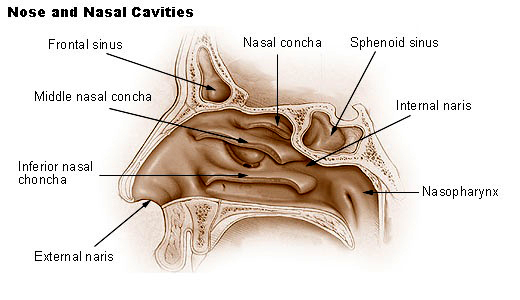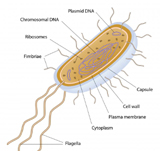Respiratory problems
Experiences and reflections of a self-made healthcare specialist
Abstract
The author describes his journey from High Court advocate to self-made healthcare specialist. He outlines the evolution of his simple and unique exercises, devised initially to relieve his own respiratory problems. This inspired him to share them with the suffering public at large.
Editor’s note
There exists all over the world a parallel Science, a Science that has evolved through life-experiences rather than through statistical studies. It is empirical in nature and somehow survives even when much of statistically gathered hard data changes. Herein lies the great value of personal experiences with regard to health and healing. Besides, there can be many approaches to the same problem and it is hard to say which one will work best for a particular person or in a given situation. The human body and its responses are not mathematical but change, adapt and evolve. That is how one has to look at this interesting report below. The treatment described below has given relief to very many people. One thing is certain too, there is much more about health and healing than is found in our standard textbooks of medicine.
A life-change
I had been suffering from allergic rhinitis from childhood. I was a lawyer by profession and while practising at the High Court, I used to suffer from recurrent coughs and colds, nasal blocks and sneezing. These problems interfered with my practice. As the days went by, the allergic rhinitis got worse and turned into asthma. Unfortunately my residence was situated in a dusty and thickly populated area, a situation which worsened my problem.
Despite using homoeopathic and allopathic medicines, my suffering continued. I consulted a pulmonologist who prescribed steroid inhalers and advised me to change my place of residence. As a result of the continued use of steroids, I became obese and my blood-pressure shot up. One cardiologist advised me not to use steroids but to use a salbutomol inhaler (a non-steroidal broncodilator). I was fed up and frustrated with using medicines and moving around doctors. I started looking around for some alternative methods to manage my health problems. The discoveries I then made inspired me to share my findings with sufferers at large.
In June 2006, a friend suggested I practise snorting warm water through the nostril in order to clean the nasal passages. So I took a glass of warm water and snorted it deep into my nose and to my surprise I found that the water went deep into the nasal passages and the excess mucus that had formed there was cleared within minutes and my breathing had improved.
As a result, I started to develop an interest in understanding the basics of human physiology and the functioning of the different organs, particularly the lungs in the human body. I came to know about the upper-airway passages, including the sinuses, their functioning and their relationship with the lungs.
The upper-airway passages are considered to be the primary sites of colonisation of pathogens, and from where they spread to the trachea, the bronchial tree, as they constitute only one pathway. I discovered that acute inflammation, chronic inflammation and hyper-secretion of mucus are factors that are responsible for all respiratory diseases like common colds, sinusitis, bronchitis, asthma and chronic obstructive pulmonary disease, throat and lung cancers, etc.
Further, I also learned that acute inflammation is a defence-process whereas chronic inflammation is a disease-process. Hyper-secretion of mucus is the result of goblet cell hyperplasia in respiratory mucosa and is a prominent feature of inflammation. If we manage the above factors, we can prevent and manage all respiratory diseases.
Further, chronic inflammation and its prominent feature, hyper-secretion of mucus are fuses that ignite cancer. Without these factors, there cannot be inflammatory cell recruitment to the site of infection, injury or allergy. Continued presence of inflammatory cells or any carcinogens may lead to cycles of tissue injury and repair resulting in carcinogenesis of the airways. Therefore, treating these two factors is very important for airway integrity and to prevent airway diseases, including throat and lung cancers. For resolution of these factors, a rapid programmed clearance of excess mucus is necessary. As a result, the origin of the inflammation is resolved, although a little medicinal assistance may be necessary. Currently available medicines like Mucolytics, Mucokinetics, Mucoregulators (steroids), expectorants, etc. are not able to meet the needs of sufferers for managing hyper-secretion of mucus. Sometimes in serious cases like chronic bronchitis and chronic obstructive pulmonary disease, patients are referred to physiotherapists for the removal of excess and sticky mucus from the throat and lungs through percussion methodology, which is currently in use but without any success. Therefore, I felt some alternative methodology was necessary to free the lungs from excess mucus.
With the medical knowledge I had gained, I devised some exercises by which these respiratory problems could be brought under control within minutes. These exercises are therapeutic tools and are a potent medication in history. They are mucokinetics and a recipe for healthy ageing. They reduce C-reactive protein, resulting in reduced inflammation. The exercises strengthen the re-modelled airways and reset the biological ageing process. There is no substitute for exercise.
Upper-airway passages cleaning exercises
These exercises should be practised with a hypertonic solution, i.e. a solution having greater osmotic pressure than that of cells or body fluids which draw water out of the cells, thus inducing plasmolysis. A glass of warm water mixed with a little sodium chloride (common salt crystals) will meet the purpose. The solution should be warmer than body temperature, i.e., 37º Celsius. Better results can be achieved if patients use the solution at a temperature of 40-41º Celsius.
The role of hypertonic solution and sodium chloride
Hypertonic solution means a solution having greater osmotic pressure than that of cells or body fluids. The cells and fluids contain generally 0.9 percent sodium chloride. The solution is considered to be a hypotonic solution. Therefore we have to use more than that, i.e. 1 to 2 percent sodium chloride to make it a hypertonic solution.
Sodium chloride: sodium is a metal and chlorine is a gas. When they are combined they become sodium chloride (common salt crystals). Sodium is made of tiny particles called sodium atoms. Each atom consists of a nucleus and a cloud of particles called electrons that whizz around the nucleus. Any atom becomes an ion if it loses or gains electrons. An ion is a charged particle. It is charged because it contains an unequal number of protons and electrons. Ionic compounds can conduct electricity when they are melted or dissolved. A solid ionic compound will not conduct electricity. But when it melts, the lattice breaks up and the ions are free to move. Since they are charged, this means they can conduct electricity.
When we mix sodium chloride with warm water, it becomes a hypertonic solution, that is one having greater osmotic pressure than that of cells or body fluids. When we snort it, it conducts electricity across the mucus membrane, and the hypotonic solution of cells accumulated as a result of acute or chronic inflammation gets diffused as a result of osmosis. The nasal passages of the nose, mouth and pharynx get cleared of excess mucus. The defunct cilia become active and ciliate mucus from the lungs.
The concept is based on ‘Living cells are osmotic systems and will shrink in hyper-tonic solutions (higher salt concentration than in cell organelles) and swell and can burst in hypo-tonic solutions (pure water or low salt concentration).’
This concept is useful, because the nasal mucosa is lined with permeable membrane bound in it by the cell organelles. During the inflammatory process, the cells get filled with water, secretions, enzymes, etc. Osmotic pressure varies with the concentration of the solution and with temperature increase.
Practice
1. Take a glass of hyper-tonic solution, keep it at the entrance of the nasal passages, bend the body forward to about 70 to 80 degrees, slowly snort in the solvent until it goes in through the nostrils, up through the nasal passages, down into the throat (pharynx) from where it takes a ‘U’ turn, enters the oral cavity. When it collects in the mouth, spit it out and blow your nose forcefully until the excess mucus collected in the nasal lining gets drained out.
2. Take the solvent, bend the body forward as stated and keep it at the entrance of the nasal passages (ala nasi), breathe out forcefully through the mouth till the lungs become empty from maximum air, then slowly snort in the solvent. It will go in through the nostrils, up through the deep cone-shaped tortuous nasal passages affecting all the turbinates (inferior, middle and superior) on the lateral sides of the nose, down into the throat (pharynx) from where it takes a ‘U’ turn, enters the oral cavity and collects in the mouth. Then spit it out. Blow out forcefully and the excess mucus collected in the nasal lining gets drained out.
3. Take sufficient hypertonic solution into the mouth, keep it wide open, bend the head backward till the trachea gets stretched and the solvent touches the oro/naso pharynx, gargle for a few seconds and try to push out the solvent through the nasal passages. During this process, the whole of the nasal lining, particularly the sinuses, the lachrymal and ear (Eustachian tube) duct openings into the turbinate get cleaned. During inflammatory conditions, the tortuous turbinate gets hyper-trophied and may result in nasal blocks. In such circumstances, the exercises should be practised slowly.
While doing the first two exercises, there is no possibility for the solvent to reach the glottis as the body is in a forward-bending position and while practising the third exercise also there is no scope for the solvent to enter the lungs as the patient will be trying to gargle (expel the air from lungs) at the oro/nasal pharynx level.
Results
1. The excess mucus produced by goblet cells and the other mucus producing glands in upper-airway passages of the mouth, nose, pharynx and the sinuses get cleaned.
2. The hypotonic secretions in the mucosal cells get diffused by the hypertonic solution, resulting in equal solute concentrations on both sides.
3. As a result of clearing the opening of the ducts from excess mucus in the turbinate, the possibility of infections spreading to the eyes, ears and brain gets reduced.
4. The defunct cilia become active and ciliate mucus towards the nasal passages which can then be blown out easily.
The inflammation of nasal mucosa gets reduced allowing free passage for air during respiration.
As for myself, I maintain good health, even at the age of 78. This is also largely due to physical and yogic exercises (with 4 to 5kg dumbbells) I do every day for a period of just 35 to 40 minutes and for five days a week. The exercises strengthen the muscles of the body, including the lungs and bones and provide a balancing power. Lung elasticity is maintained. Breathing improves. However, senior citizens are advised to consult a doctor before starting any new regime.
To view videos of these exercises, type ‘HYPER-SECRETION OF MUCUS — Mankonda Prakash Rao YOU TUBE VIDEOS’ at any search engine.
Mankonda Prakash Rao is a self-made healthcare consultant based in Hyderabad, India. He can be contacted at [email protected]
Share with us (Comments,contributions,opinions)
When reproducing this feature, please credit NAMAH,and give the byline. Please send us cuttings.







